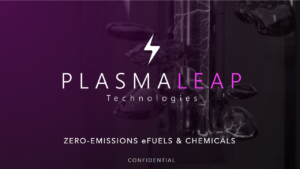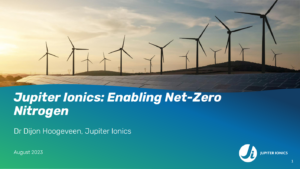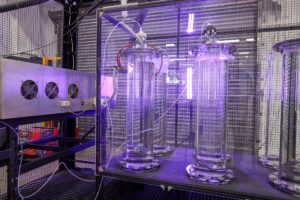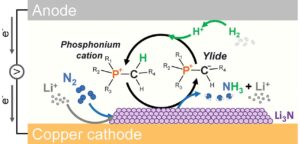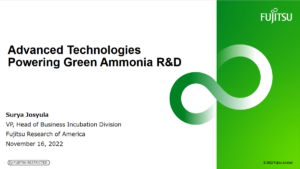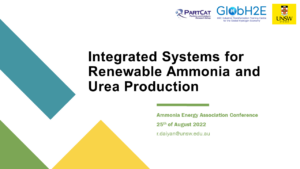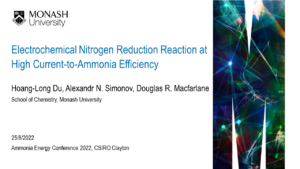Electrochemical Ammonia
PlasmaLeap - Zero Emissions eFuels & Chemicals
Alternative synthesis start-ups: exploring the growing ecosystem in Australia and New Zealand
A fast-growing ecosystem of startups is progressing various technology pathways in Australia and New Zealand. Melbourne-based Jupiter Ionics is developing an electrolytic cell that will directly reduce nitrogen to ammonia under mild temperature and pressure conditions. In New Zealand, Liquium is embarking on a pilot-scale deployment of its miniaturised Haber Bosch technology. The University of Newcastle and Element One are progressing validation and pilot-phase deployments of AMMONIAC - a novel, “chemical-looping” ammonia production system. And in Sydney, PlasmaLeap is developing a plasma-based system, with on-farm trials already planned.
A road ahead via lithium-mediated electrochemical nitrogen reduction?
Realisation of electrochemical nitrogen reduction to ammonia has proven to be a herculean scientific challenge. Recently, a focus on Lithium-mediated synthesis has delivered promising results. Last year a team from Monash University in Australia unveiled their phosphonium “proton shuttle” method, and this year have reported nearly 100% Faradaic efficiency for the reaction (with promising reaction rates). Late last year, a team from the Technical University of Demark (DTU) reported that addition of small amounts of oxygen gas drastically increased Faradaic efficiencies and production rates. The results push electrochemical synthesis R&D ever-closer to elusive benchmarks set for commercial realisation.
Advanced technologies powering green ammonia R&D
Integrated Systems for Renewable Ammonia and Urea Production
Nitrogen Reduction Reaction at High Current-to-Ammonia Efficiency
AI & High-Performance Computing for ammonia catalyst R&D
Fujitsu and Iceland-based Atmonia will join forces to accelerate catalyst development for the production of ammonia via electrochemical nitrogen reduction reaction (eNRR). By using artificial intelligence and high-performance computing (HPC) technologies, the researchers can conduct “high-speed quantum chemical calculations” virtually rather than via physical experiments, allowing for greater flexibility & speed.

